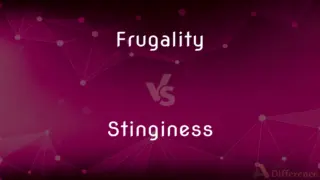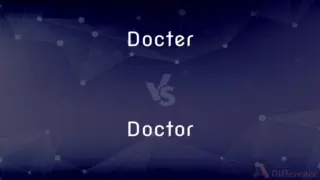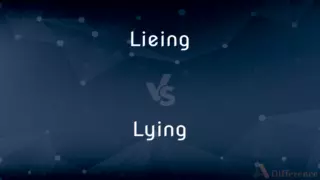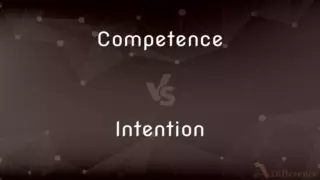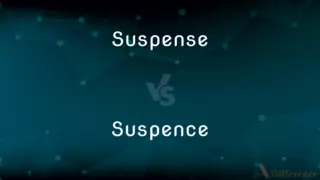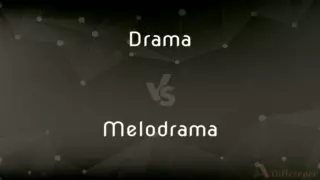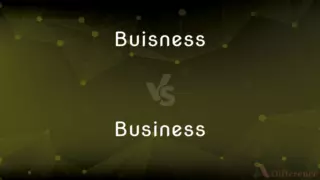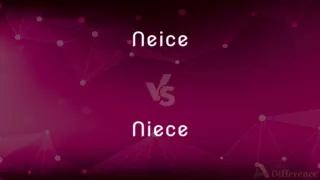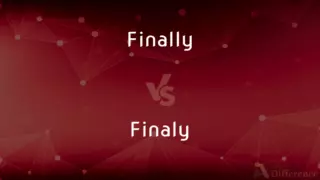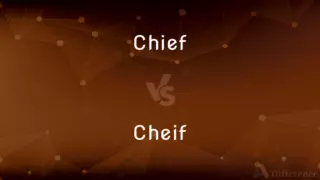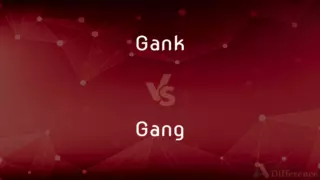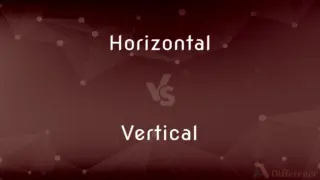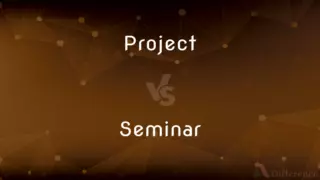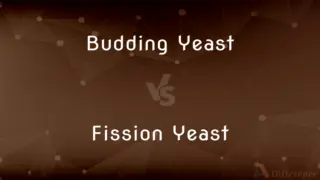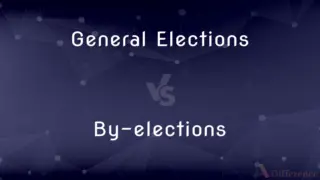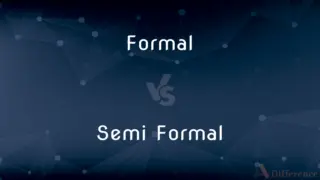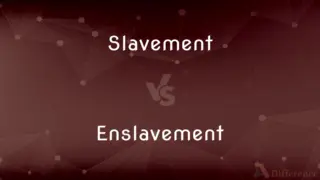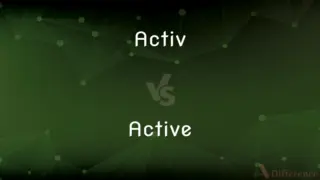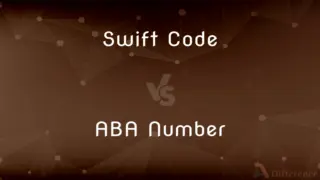Facilitated Diffusion vs. Active Transport — What's the Difference?
By Tayyaba Rehman — Published on October 23, 2023
Facilitated diffusion is the passive movement of molecules through a membrane using transport proteins, without energy input. Active transport requires energy to move molecules against their concentration gradient, often via protein pumps.
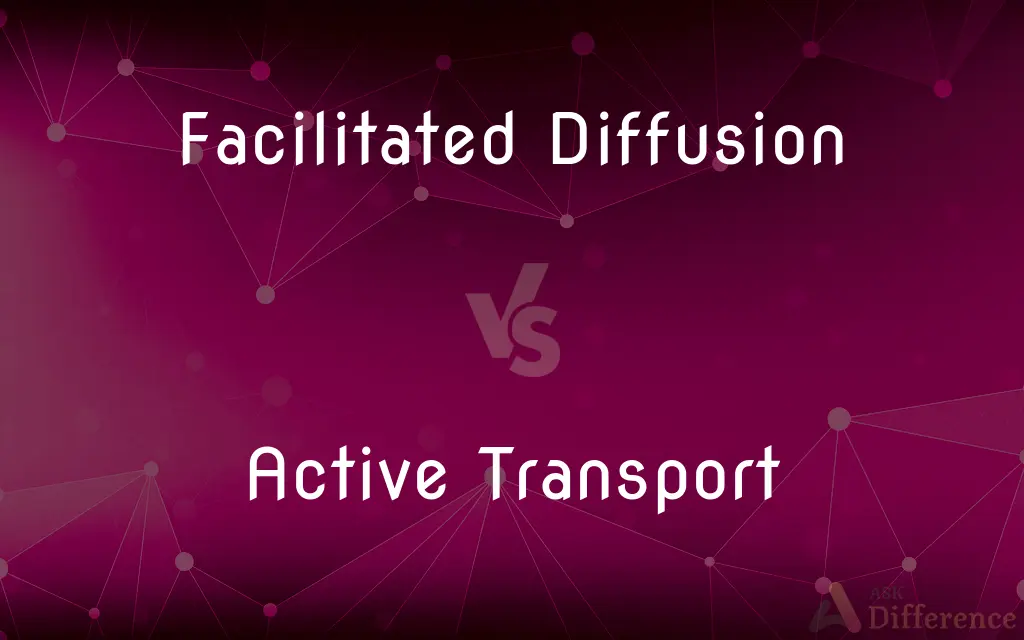
Difference Between Facilitated Diffusion and Active Transport
Table of Contents
ADVERTISEMENT
Key Differences
Facilitated diffusion doesn't require the cell to use its energy reserves. Molecules move from an area of high concentration to low concentration, following their natural tendency to spread out evenly. In contrast, active transport works against this natural tendency, necessitating an energy source to move molecules from low to high concentration areas.
Tayyaba Rehman
Oct 23, 2023
A fundamental distinction between facilitated diffusion and active transport is the energy requirement. The former is a form of passive transport, and energy isn't spent. Conversely, active transport is an energy-consuming process ensuring the proper function and maintenance of cellular environments.
Tayyaba Rehman
Oct 23, 2023
Both facilitated diffusion and active transport are crucial for cellular function. While the former aids in the equal distribution of molecules, the latter helps maintain necessary gradients, like the sodium-potassium gradient crucial for nerve cell function.
Tayyaba Rehman
Oct 23, 2023
Facilitated diffusion allows specific molecules to move across cell membranes passively. This process leverages transport proteins that provide channels or carriers for these molecules. On the other hand, active transport is a process wherein cells expend energy, typically in the form of ATP, to move molecules against their concentration gradient.
Tayyaba Rehman
Oct 23, 2023
The operation of facilitated diffusion involves specific transport proteins that either provide a passage or undergo a conformational change to move molecules across a membrane. Active transport, while also utilizing proteins, specifically employs pumps that actively transfer molecules, often ions, in and out of cells.
Tayyaba Rehman
Oct 23, 2023
ADVERTISEMENT
Comparison Chart
Direction of Movement
High to low concentration.
Low to high concentration, against gradient.
Tayyaba Rehman
Oct 23, 2023
Mechanism
Uses transport proteins (channels or carriers).
Uses protein pumps.
Tayyaba Rehman
Oct 23, 2023
Examples of Molecules Moved
Glucose, ions via channels.
Sodium and potassium ions via sodium-potassium pump.
Tayyaba Rehman
Oct 23, 2023
ADVERTISEMENT
Definitions
Facilitated Diffusion
Doesn't require cellular energy.
Oxygen moves into cells by facilitated diffusion without using energy.
Tayyaba Rehman
Oct 06, 2023
Active Transport
Moves molecules against concentration gradient.
The sodium-potassium pump uses active transport to maintain ion gradients.
Tayyaba Rehman
Oct 06, 2023
Facilitated Diffusion
Uses specific transport proteins.
Channel proteins enable ions to pass through membranes via facilitated diffusion.
Tayyaba Rehman
Oct 06, 2023
Active Transport
Essential for cell environment regulation.
Active transport mechanisms are vital for pH and ion balance in cells.
Tayyaba Rehman
Oct 06, 2023
Facilitated Diffusion
Moves molecules from high to low concentration.
In facilitated diffusion, molecules move down their concentration gradient.
Tayyaba Rehman
Oct 06, 2023
Active Transport
Utilizes protein pumps.
Calcium is pumped out of cells via active transport using calcium pumps.
Tayyaba Rehman
Oct 06, 2023
Facilitated Diffusion
Assists specific molecules across membranes.
Facilitated diffusion helps polar molecules bypass the lipid bilayer.
Tayyaba Rehman
Oct 06, 2023
Active Transport
Requires cellular energy, often ATP.
Cells expend ATP during active transport to move ions.
Tayyaba Rehman
Oct 06, 2023
Facilitated Diffusion
Passive movement through membrane proteins.
Glucose enters cells via facilitated diffusion.
Tayyaba Rehman
Oct 06, 2023
Active Transport
Maintains specific molecule gradients.
Active transport ensures that cells have higher potassium inside and more sodium outside.
Tayyaba Rehman
Oct 06, 2023
FAQs
How does Active Transport differ?
Active transport requires energy to move molecules against their concentration gradient, often utilizing protein pumps.
Tayyaba Rehman
Oct 23, 2023
Why is Facilitated Diffusion crucial?
It enables specific molecules, which can't directly pass the lipid bilayer, to move into or out of cells efficiently.
Tayyaba Rehman
Oct 23, 2023
What's an example of Facilitated Diffusion?
Glucose entering cells through glucose transporters is a form of facilitated diffusion.
Tayyaba Rehman
Oct 23, 2023
Can cells regulate Active Transport?
Yes, cells can control active transport to maintain specific concentration gradients, like ion balances.
Tayyaba Rehman
Oct 23, 2023
Are protein pumps involved in Facilitated Diffusion?
No, facilitated diffusion involves transport proteins, either channels or carriers, not pumps.
Tayyaba Rehman
Oct 23, 2023
Name a common example of Active Transport.
The sodium-potassium pump actively moving sodium out and potassium into cells.
Tayyaba Rehman
Oct 23, 2023
Is ATP always used in Active Transport?
Typically, yes, but some processes use other energy forms like electrochemical gradients.
Tayyaba Rehman
Oct 23, 2023
How does Active Transport benefit cells?
It allows cells to maintain essential conditions and gradients for cellular processes and function.
Tayyaba Rehman
Oct 23, 2023
Why might a cell use Active Transport over passive methods?
To maintain specific concentration levels, establish gradients, or uptake nutrients found in low concentrations outside.
Tayyaba Rehman
Oct 23, 2023
What is Facilitated Diffusion?
Facilitated diffusion is a passive transport process where molecules move across cell membranes through specific transport proteins.
Tayyaba Rehman
Oct 23, 2023
Why doesn't Facilitated Diffusion need energy?
Because it moves molecules from high to low concentration, following their natural diffusion gradient.
Tayyaba Rehman
Oct 23, 2023
Can Active Transport create ion imbalances?
Yes, it intentionally creates and maintains ion imbalances, crucial for various cellular activities.
Tayyaba Rehman
Oct 23, 2023
Is the direction of Active Transport always against the gradient?
Yes, it moves molecules from areas of low to high concentration, against their natural tendency.
Tayyaba Rehman
Oct 23, 2023
Are there limits to Facilitated Diffusion?
Yes, it can reach saturation when all transport proteins are occupied.
Tayyaba Rehman
Oct 23, 2023
Do all cells utilize Facilitated Diffusion?
Most cells use it to transport specific molecules that can't easily diffuse across membranes.
Tayyaba Rehman
Oct 23, 2023
Author Spotlight

Written by
Tayyaba RehmanTayyaba Rehman is a distinguished writer, currently serving as a primary contributor to askdifference.com. As a researcher in semantics and etymology, Tayyaba's passion for the complexity of languages and their distinctions has found a perfect home on the platform. Tayyaba delves into the intricacies of language, distinguishing between commonly confused words and phrases, thereby providing clarity for readers worldwide.

